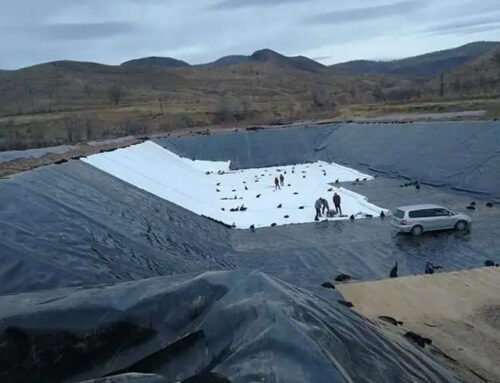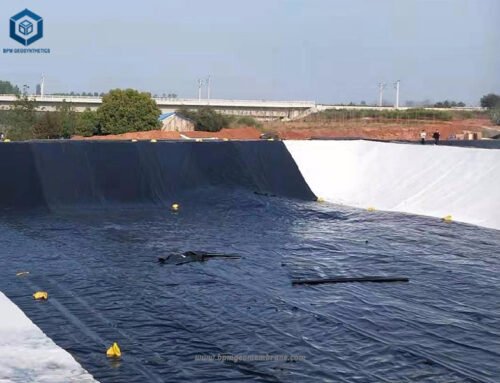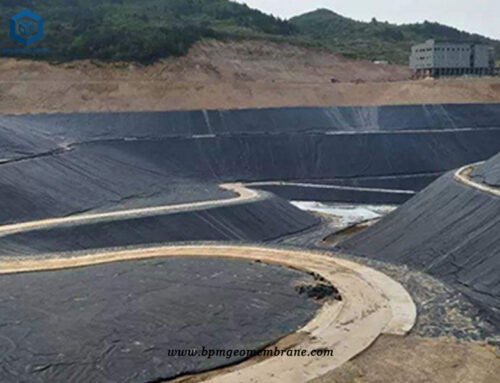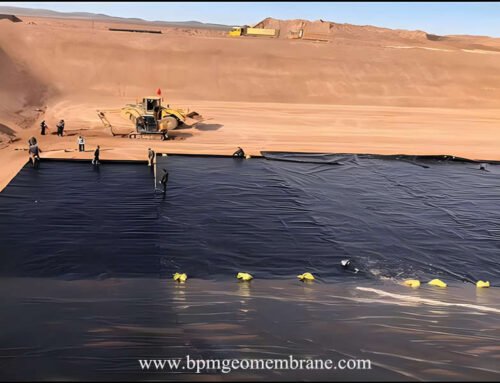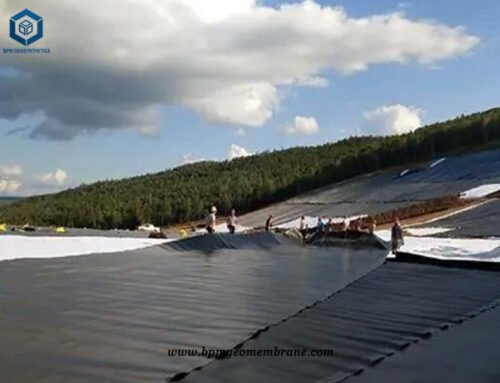Reinforced polyethylene liner, also known as RPE Liner, is a kind of geomembrane liner for fish ponds. RPE liners are a good choice for ponds that need a durable and long-lasting liner. They are especially well-suited for ponds that are in direct sunlight or that may be subjected to sharp objects.
BPM reinforced polyethylene liner finds wide application in various industries such as water conservancy, landscaping, petrochemicals, mining, salt production, agriculture, and aquaculture. Its versatility and reliability make it an ideal choice for projects requiring effective containment, protection, and environmental safety measures.
With a commitment to quality and adherence to industry standards, we continue to provide reliable reinforced polyethylene liners that meet diverse customer needs across multiple sectors.
1. What Is Reinforced Polyethylene Liner?
A reinforced polyethylene liner, also known as RPE liner, is a specialized type of pond material liner made from high-density polyethylene (HDPE) that is reinforced with a scrim or mesh material. The reinforcement adds strength and tear resistance to the liner, making it durable for lining ponds and water containment structures. It can withstand punctures, tears, and stretching. RPE liners come in various thicknesses and strengths, can be custom-sized, and are installed by securing them in place and creating watertight seams. They are designed for safe containment of liquids, sludges, and contaminated soils, and are suitable for fish, plants, and aquatic life. RPE liners are easy to install, require minimal maintenance, and can be fabricated into sheets of various sizes for different applications.
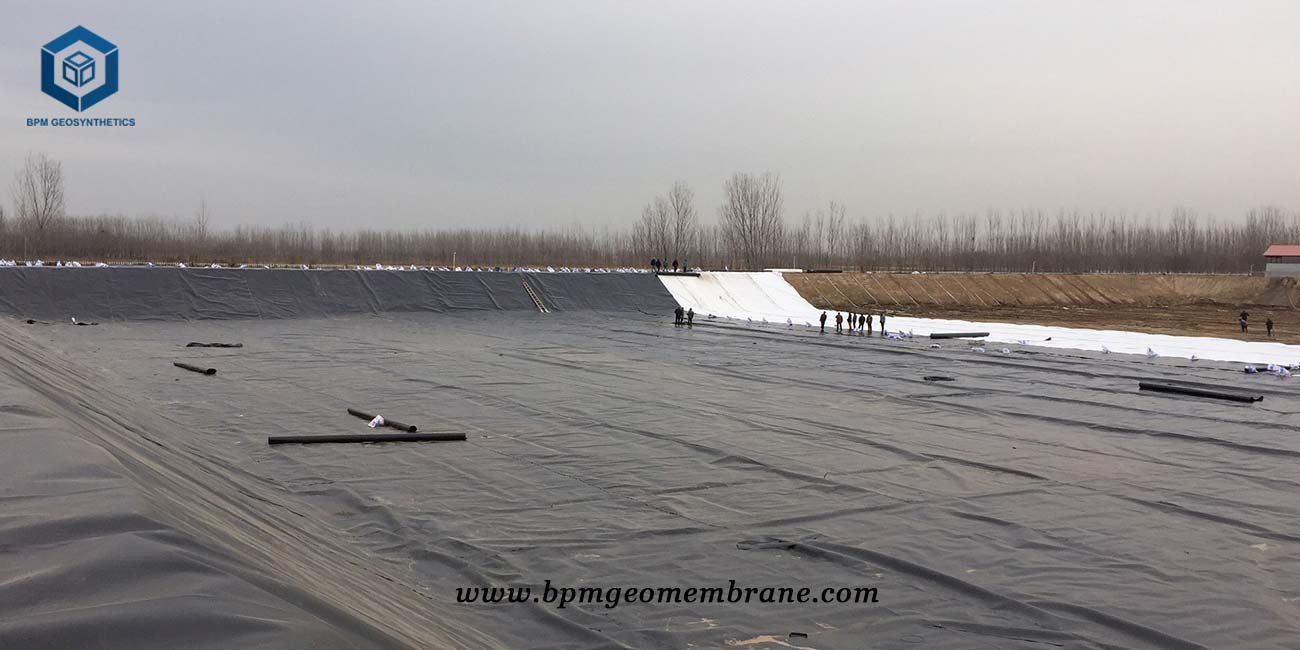
2.What Are Advantages of Reinforced Polyethylene Liner?
The reinforced polyethylene liner offers several advantages due to its unique properties:
2.1 Wide Range of Specifications
The reinforced polyethylene liner is available in various widths and thicknesses, ranging from 0.2mm to 2.0mm. This versatility allows for customization and ensures compatibility with different project requirements.
2.2 Environmental Stress Resistance and Cracking Performance
The liner exhibits excellent resistance to environmental stress, including tension, compression, and flexing. It can withstand challenging conditions without cracking or rupturing, ensuring long-term durability and performance.
2.3 Chemical Erosion Resistance
The reinforced polyethylene liner is highly resistant to chemical erosion. It can effectively protect against the corrosive effects of various chemicals, providing a reliable barrier between the stored substances and the surrounding environment.
2.4 Broad Application Temperature Range and Long Service Life
The liner is designed to withstand a wide range of temperatures, making it suitable for diverse climates and environments. It demonstrates exceptional performance over an extended service life, ensuring the longevity of the containment system.
2.5 Low Permeability
The reinforced polyethylene liner has low permeability, making it ideal for applications such as landfill containment. It prevents the penetration of leachate into the surrounding soil and ensures that methane gas remains trapped within the HDPE geomembrane cover system.
2.6 Chemical Resistance
The liner exhibits resistance to a wide range of chemicals, making it suitable for various containment applications. It can effectively withstand exposure to different substances without degradation or loss of performance.
2.7 Ultraviolet (UV) Resistance
The reinforced polyethylene liner possesses good resistance to UV exposure. The addition of carbon black further enhances its UV resistance. Additionally, the absence of plasticizers eliminates concerns regarding volatilization, ensuring the liner’s stability and reliability over time.
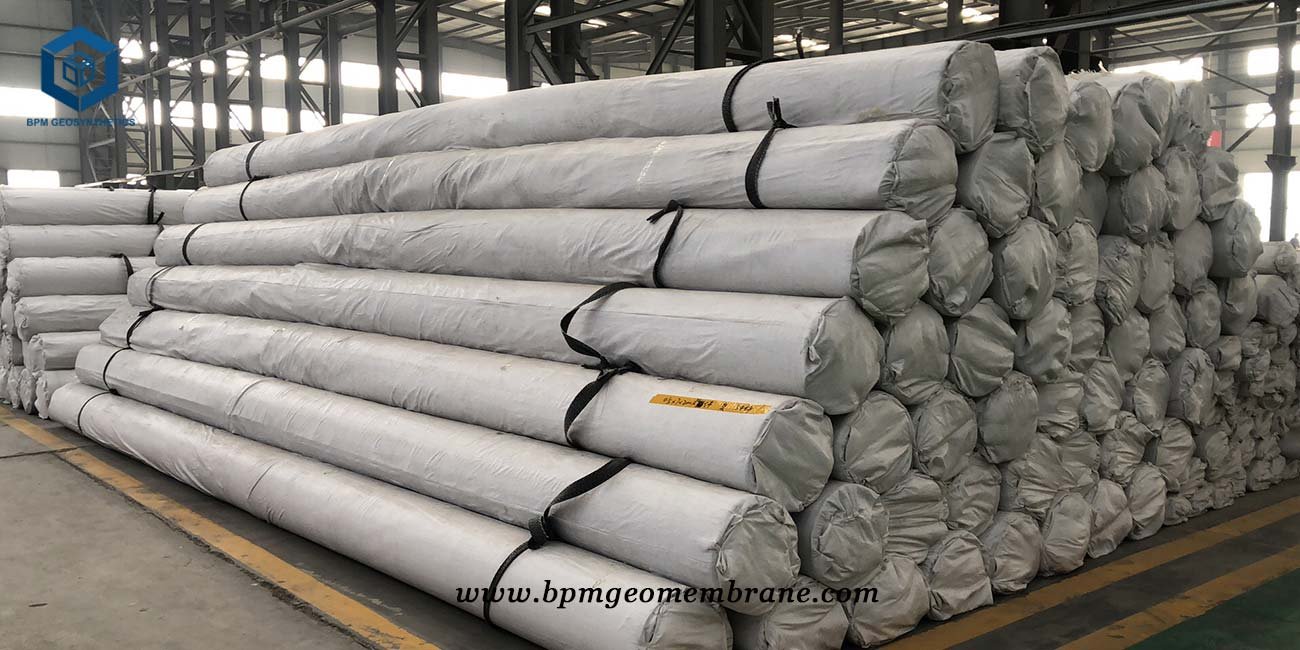
3. What Is The Difference Between HDPE And RPE Liner?
The main difference between RPE (Reinforced Polyethylene) and HDPE (High-Density Polyethylene) liners lies in their specific properties and areas of application.
3.1 Composition
HDPE liners are made of high-density polyethylene, which is a thermoplastic polymer known for its strength, durability, and chemical resistance. RPE liners, on the other hand, are reinforced polyethylene liners that consist of multiple layers of high-density polyethylene with a reinforcing scrim or mesh material sandwiched between them. The reinforcement enhances the liner’s tear resistance and dimensional stability.
3.2 Strength and Durability
HDPE liners are known for their strength and durability, making them suitable for various containment applications. They have good resistance to tearing and puncturing, as well as resistance to chemicals and UV exposure. RPE liners, with their reinforced construction, offer even greater tear resistance and tensile strength, making them ideal for projects that involve water abrasion, irregular surfaces, or contact with rocks.
3.3 Cost-Effectiveness and Application
HDPE liners are generally more cost-effective than RPE liners. They are commonly used in landfills, temporary containment projects such as lagoons, and mining applications. HDPE liners provide reliable containment and are suitable for projects where the liner will not be subjected to excessive water abrasion or irregular surfaces.
RPE liners, with their reinforced construction and enhanced tear resistance, are well-suited for more demanding and durable lining projects. They are suitable for applications that involve water abrasion, such as ponds, reservoirs, canals, and other water containment structures. RPE liners can withstand contact with rocks, making them a preferred choice for projects where the liner may come into direct contact with uneven or rocky surfaces.
HDPE liners offer a cost-effective solution for general containment applications, while RPE liners provide added strength and durability for projects with specific requirements such as water abrasion or irregular surfaces. The choice between the two depends on the specific needs of the project and the level of durability and tear resistance required.
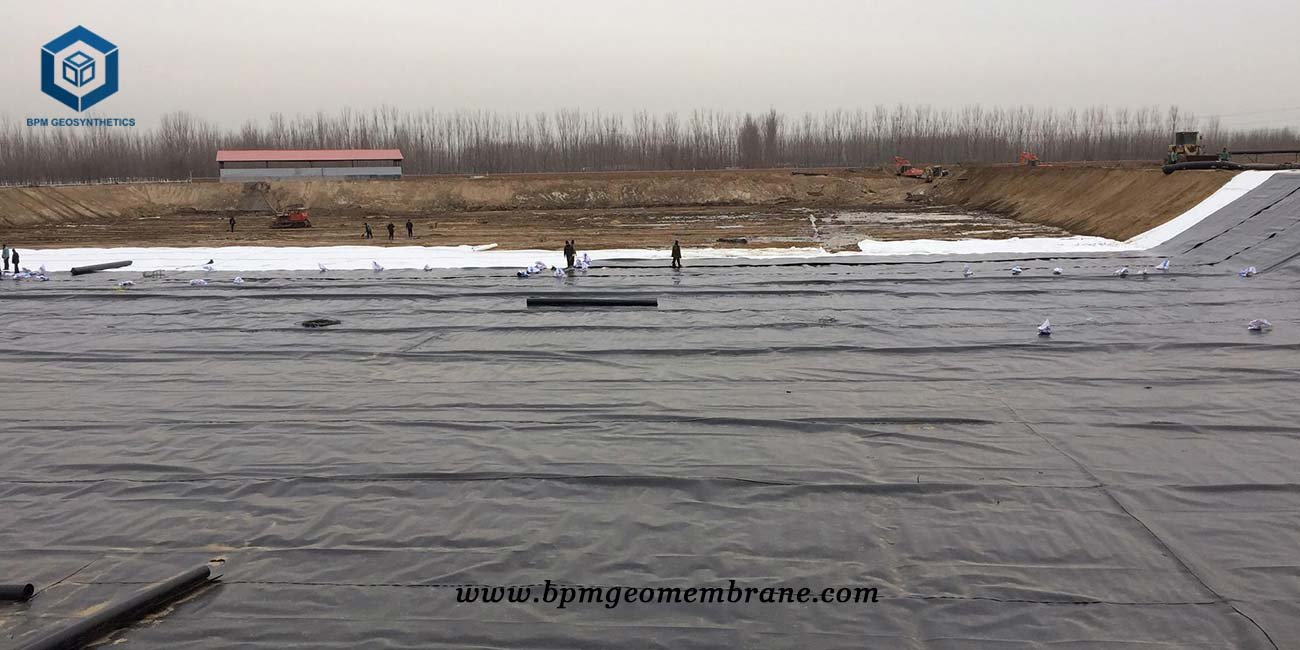
4. Case Study of Reinforced Polyethylene Liner for Landfill Project in Indonesia
In the case of the landfill project in Indonesia, the specifications for the reinforced polyethylene liner are as follows:
- Total HDPE geomembrane quantity: 12,000 square meters
- HDPE Geomembrane thickness: 2.0mm
- Each roll size: 7m x 100m
Based on the customer’s requirements, we provided them with a competitive price for the 2.0mm virgin material reinforced polyethylene liner. To ensure customer satisfaction, we also shared details of similar landfill project cases where our reinforced polyethylene liner was successfully used.
At the customer’s request, we sent samples of the 2.0mm HDPE geomembrane for testing. Upon passing the testing phase, the customer decided to proceed with placing the order with us.
By utilizing reinforced polyethylene liners in their landfill project, the customer in Indonesia will benefit from the liner’s ability to contain waste and prevent seepage into the surrounding soil and water sources. Additionally, the liner will help accelerate the decomposition process by acting as a barrier against UV light. This will contribute to a more efficient waste management system while minimizing environmental pollution.
Overall, the use of reinforced polyethylene liners in the landfill project in Indonesia demonstrates the effectiveness and suitability of these liners for waste containment and environmental protection purposes.
5. About BPM Geomembrane
BPM is the professional geosynthetics manufacturer and exporter. We are also providing professional geomembrane design and installation service. OEM and ODM are also available. If you have any questions or inquiries, please contact us, we will reply as soon as possible.

